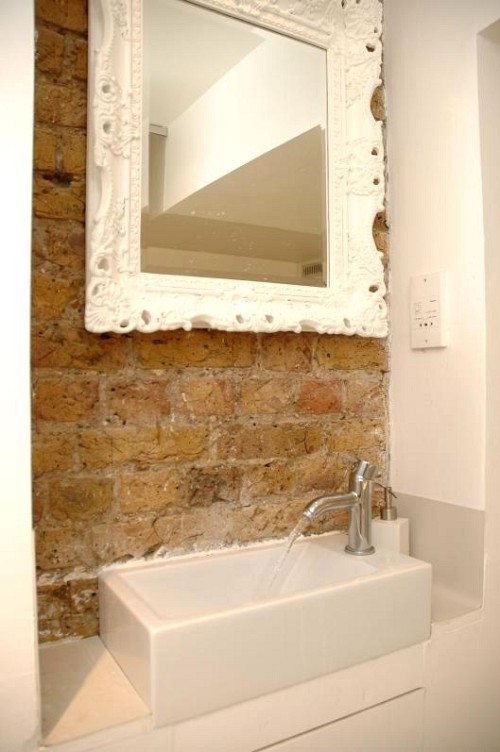DIY Bathroom Renovation: What to Keep, What to Replace
 The smallest room in your home tends to be THE most expensive to renovate. That’s because a typical bathroom remodel is heavy on costs for both labor and materials. Want to save money? Do most of the work yourself and carefully consider what to keep and what to get rid of.
The smallest room in your home tends to be THE most expensive to renovate. That’s because a typical bathroom remodel is heavy on costs for both labor and materials. Want to save money? Do most of the work yourself and carefully consider what to keep and what to get rid of.
Here’s help.
Personal care products you never use. Let’s start small. The first step to renewing your bathroom is clearing clutter. No matter how expensive that shampoo was or how good that aftershave smells, if you’re not going to use it, toss it. (Many shelters accept donations of unopened toiletries.) You may be amazed how much prime storage space this opens up. Besides, you have to move out your stuff before you start your DIY bathroom renovation, anyway, so make sure that you actually want to put everything back.
Jetted tub. Your home’s previous owner probably thought a jetted tub was the latest word in home spa luxury. For you, though, it seems like more of a pain in the neck – scrubbing the jets after every time you use it is a major hassle and you never feel they’re really clean. Plus the jetted tub takes so much more water to fill than a standard bathtub. Remove and replace is the way to go here.
Claw foot bath. Think twice – or even three times – before you consign a cast iron, claw foot bathtub to the dump. This type of vintage fixture is likely to be harder wearing than any modern bath and never goes out of style. If it’s looking somewhat the worse for wear, try applying a dedicated cast iron cleaner. Refinishing is a more drastic option, but it’ll still be cheaper than buying a high-quality new tub.
Toilet. Base your decision on: 1) Is the toilet functional (or can it be fixed easily and affordably)? and 2) Does it save water? High efficiency toilets have been the norm since 1992, using 1.6 gallons of water per flush. (Older models used 3.5-7 gallons.) But don’t assume that a toilet manufactured 25 or so years ago will serve you well today; early HE toilets weren’t uber efficient. If you have to flush twice, you’re not saving much water. It may be toilet replacement time.
Vanity. You make the call when it comes to your bathroom vanity. Even if you're a DIY newbie, refreshing a battered vanity cabinet often is an easy, cheap upgrade – a lick of paint and more modern knobs or pulls work wonders. For a midsize change, possibly replace just the countertop. A new bathroom counter requires a relatively low cash outlay for a small amount of material like quartz or granite, but can vastly improve the look of the whole room.
Sink. Let’s talk about a more burning issue than sink style here. Who else hates it when the bathroom counter is a-slosh with water? After every. Single. Handwashing. Session. As part of your reno, do give a thought to solutions. You can either fit your faucet with a flow-restricting aerator or hire a plumber to install a nice deep vessel sink. Both will keep the water where it’s supposed to be.
Tile. Bathrooms are all about tile – which is just fine if you're happy with the tile you’ve already got. However ... if you’d rather not face a salmon-pink-and-black checkerboard pattern first thing in the morning, then you can either have the old stuff ripped out and install new tile (expensive!) or try a less pricey solution: modernize with tile paint.
Mirror. Yes, 1980-1990 was a memorable decade, and it seems a lot of builders tried to immortalize the 80s by installing those whopping great bathroom mirrors, usually topped by an array of Hollywood lights. If you’d prefer to live in the here and now, you’ve got a couple of options: oh so carefully remove the mirror and replace with a more modern oval looking glass OR for a simpler DIY bathroom renovation, transform your mirror by adding a frame or some shelves to tone it down.
Laura Firszt writes for networx.com.
Looking for a Pro? Call us (866) 441-6648

Average Costs
Related Experiences

Garage Remodel: Converted To Deluxe Man Cave With Custom Cabinetry And Workbench

My Remodeled Bathroom Is Modern, Clean And Beautiful



